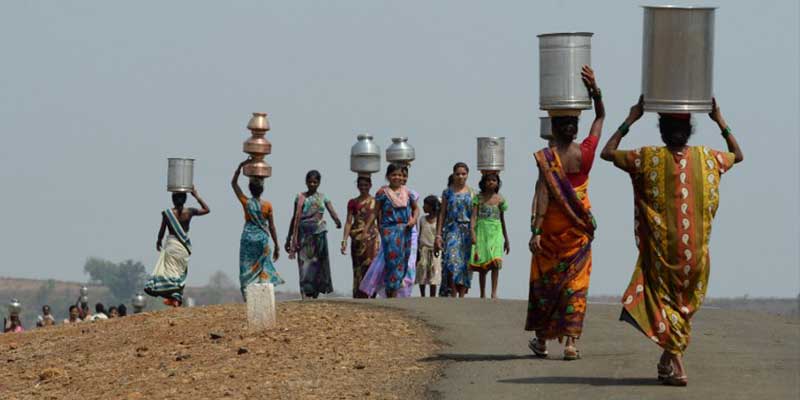- India
- Feb 28
‘Nearly half of India is facing drought’
Nearly 50 per cent of the country is facing drought with at least 16 per cent falling in the “exceptional” or “extreme” category, according to IIT Gandhinagar scientists managing India’s real-time drought prediction system.
This ongoing drought will pose a lot of challenges in water availability this summer, said Vimal Mishra, associate professor at IIT Gandhinagar.
The real-time monitoring system run by his team collects weather and precipitation data from the India Meteorological Department (IMD), which is then used to simulate soil moisture and other factors that contribute to drought.
The results of the simulations, prepared by the Water and Climate Lab at IIT Gandhinagar, are available on the IMD website.
“About 47 per cent of the country is facing drought with 16 per cent facing extreme, or exceptional category of drought, which we show from our real-time monitoring system that we have developed,” said Mishra.
Arunachal Pradesh did not get good rain this year, and parts of Jharkhand, southern Andhra Pradesh, Gujarat and northern part of Tamil Nadu are under drought. If these areas experience very hot summer before the onset of monsoon, it could lead to a crisis, he said.
According to him, continuing drought will further burden the already depleting ground water resources of the country. “We are not enhancing groundwater recharge. On the other hand, drought conditions are making us extract more and more water,” he said.
While famine-like conditions are not expected, the drought will have a massive impact on the economy. “It can create long-term stress, if not mortality for poor, marginalised farmers,” Mishra said.
The scientist said global warming and climate change are likely to exacerbate drought in the coming years. “If our groundwater is not recharged and managed sustainably, we could face a very difficult situation in the coming years,” he said, adding that groundwater is being used irresponsibly at present.
“You can reduce groundwater by selecting appropriate crops. If we already have depleted groundwater, we should not grow water-intensive crops. For example, Punjab should not be growing rice,” he said.
“The government needs to take some tough decisions as far as groundwater and water conservation is concerned,” Mishra said.
Conserving water in urban homes is just a drop in the bucket compared to steps that can be taken in the agriculture sector, he said.
“Of course, conservation should be encouraged at every level, but the elephant in the room is agriculture. Eighty per cent of our total freshwater is used in agriculture sites, rather than residential sites,” he said.
He also stressed the need to equip ourselves better to tackle a drought situation.
“The government thinks drought is a reactive situation, that they will provide a relief only once there is a crisis. But with the data available, they can take proactive measures to prevent a water crisis,” he added.

